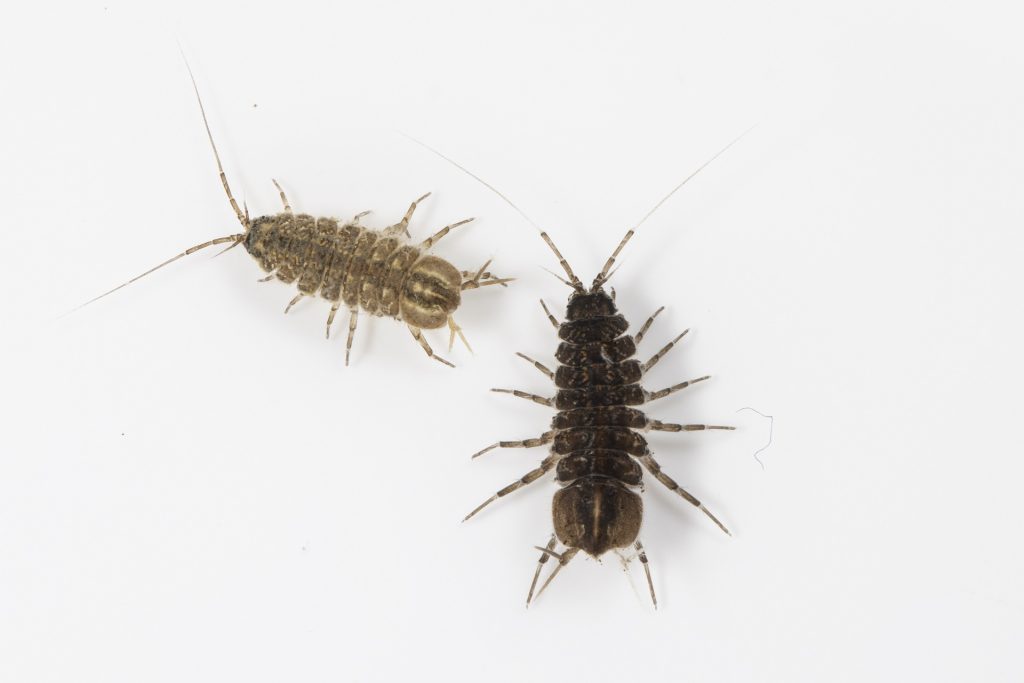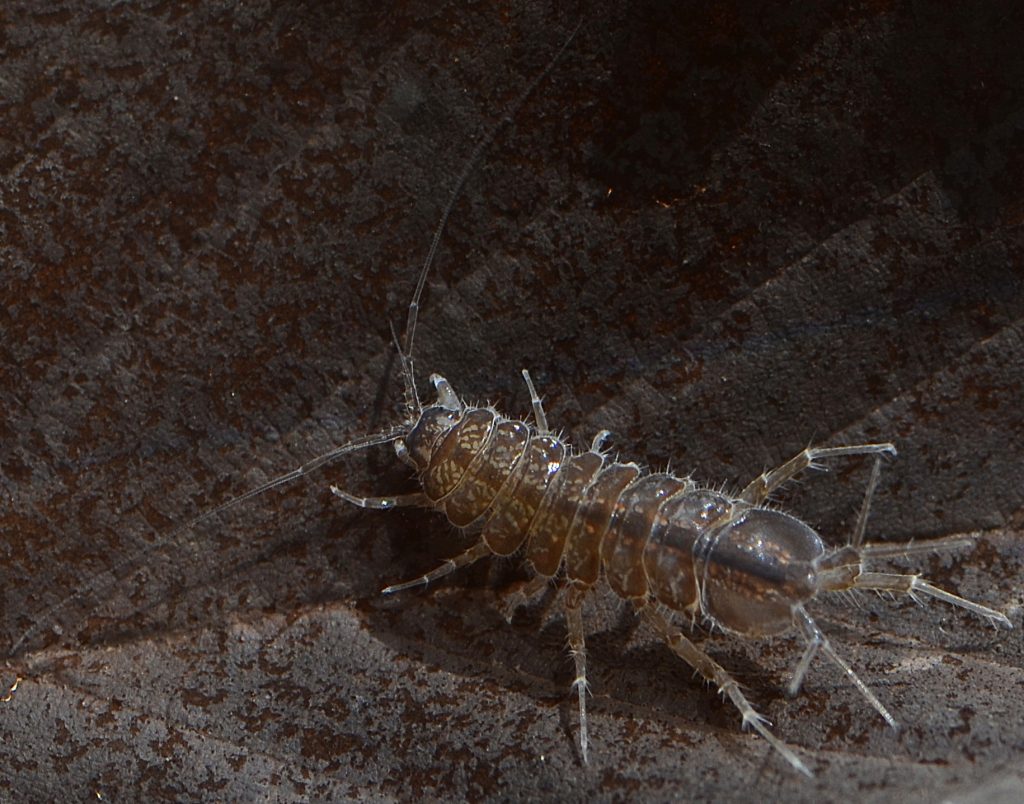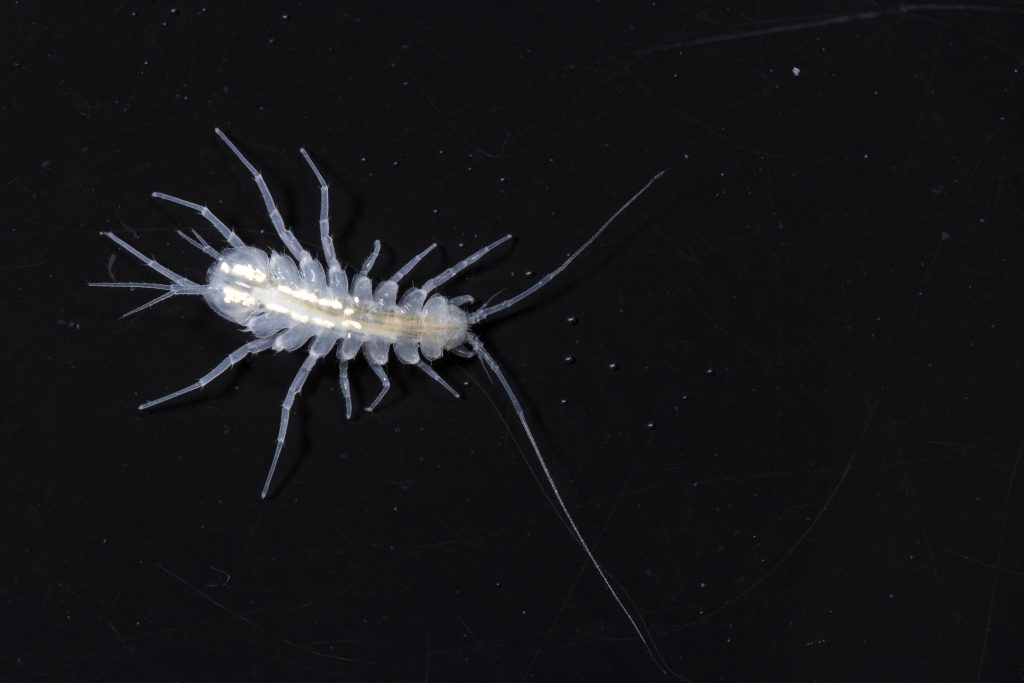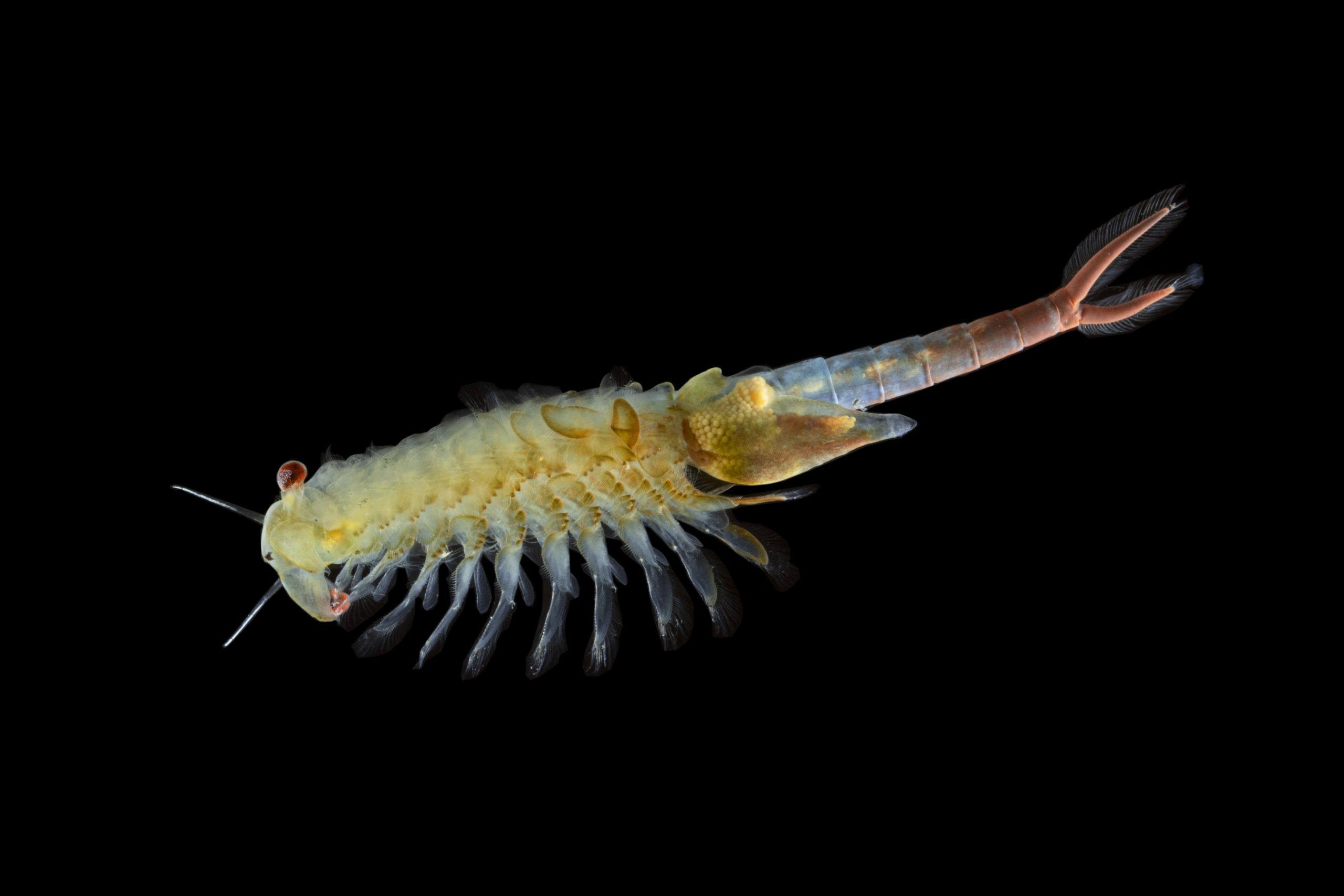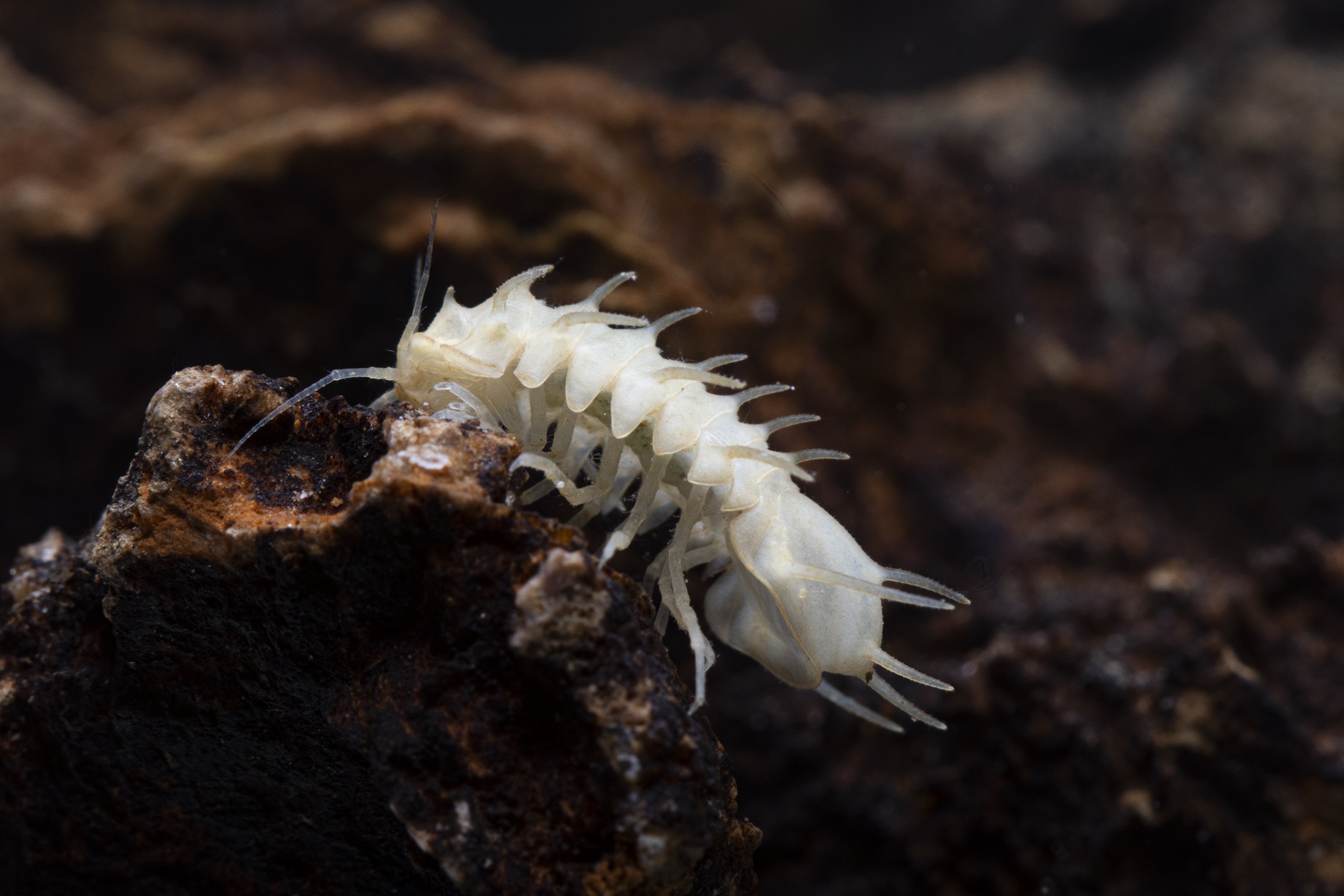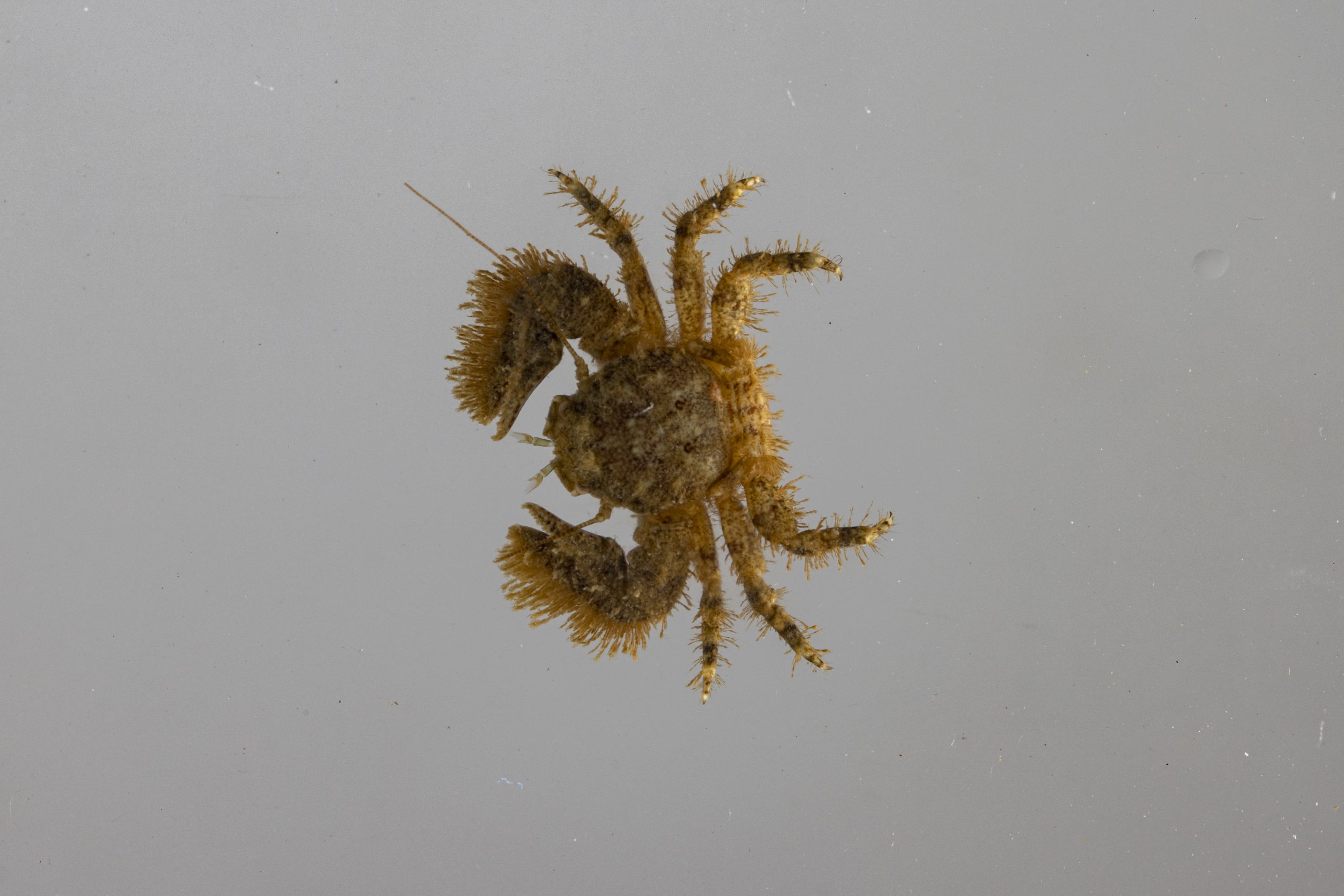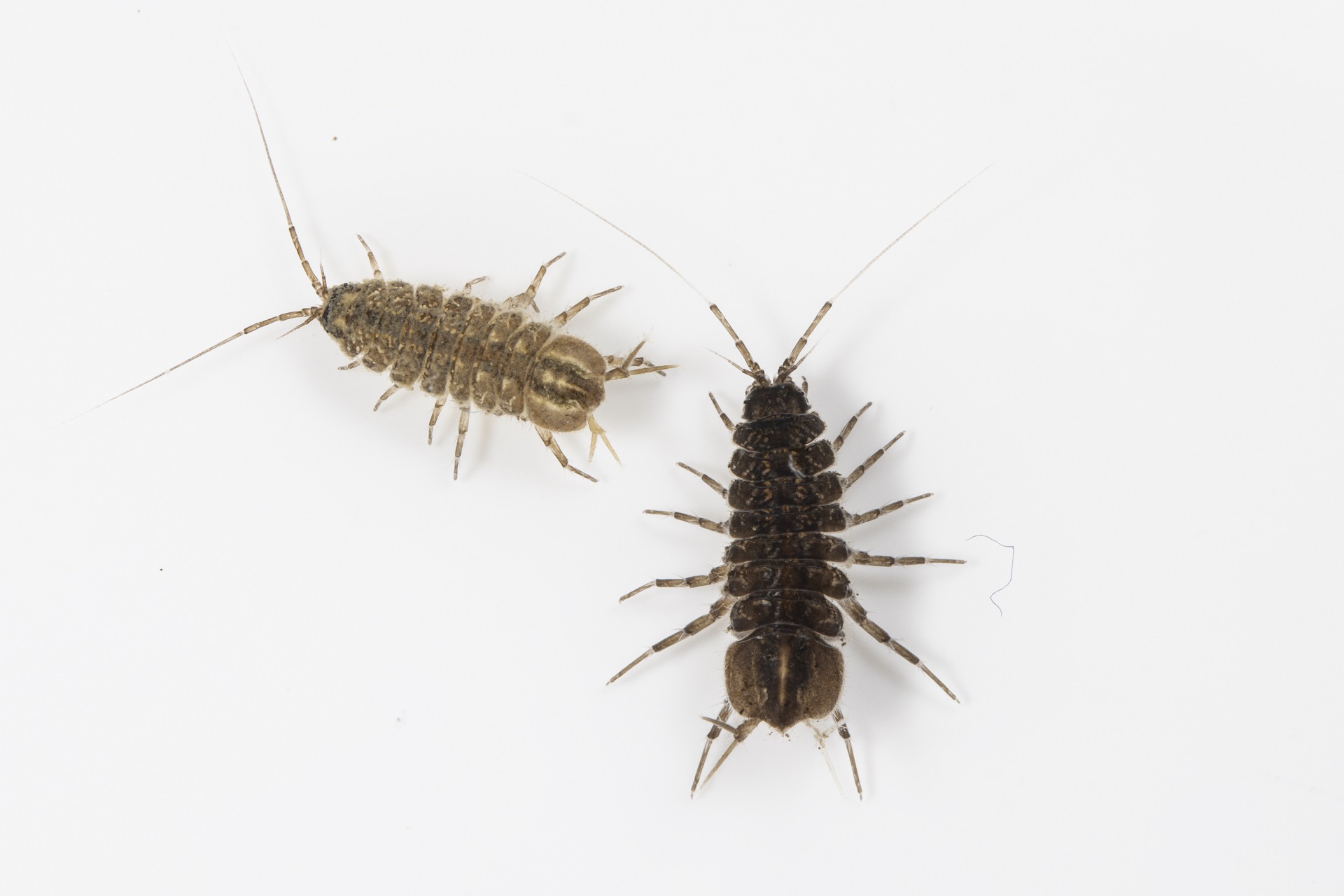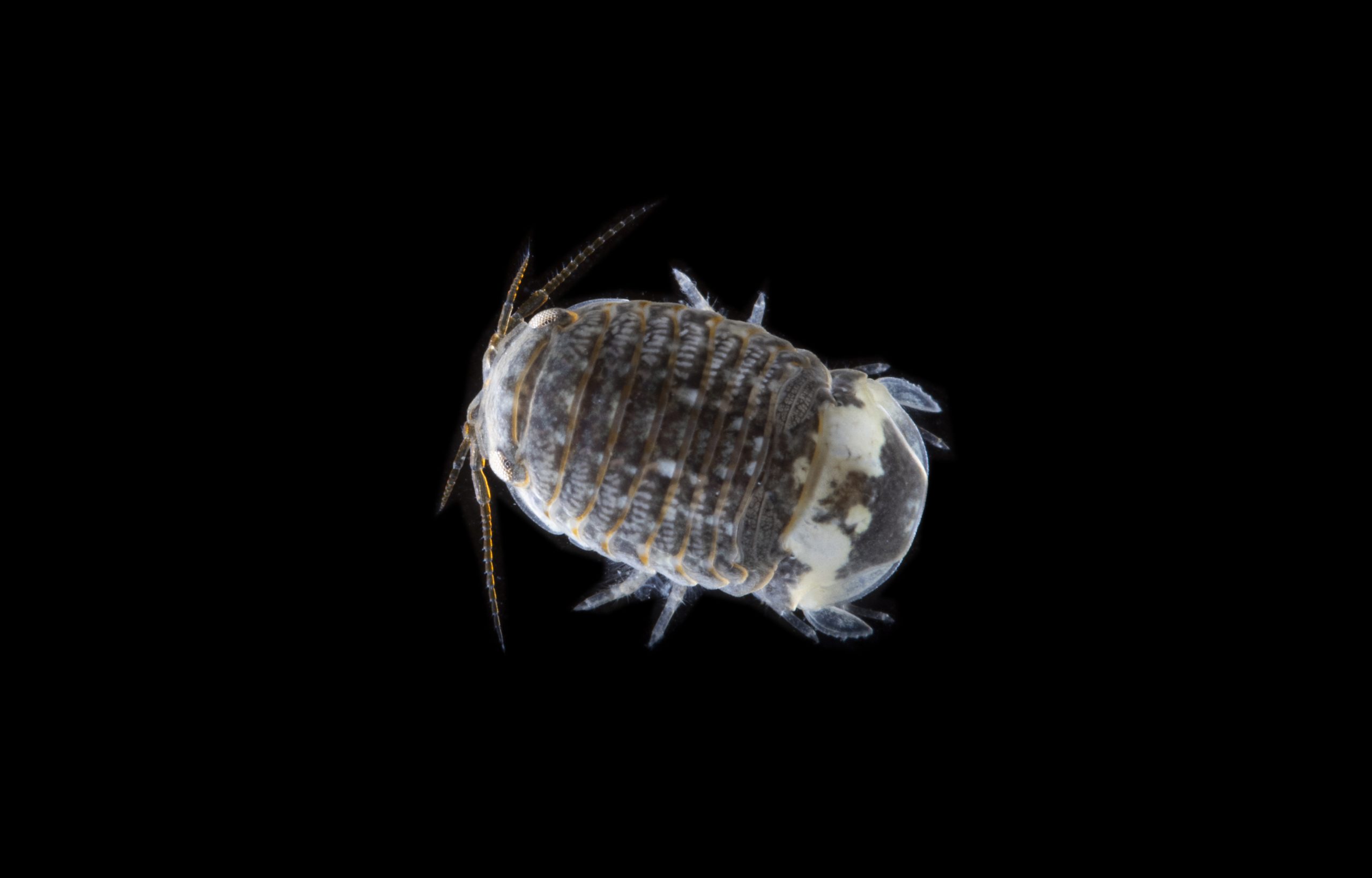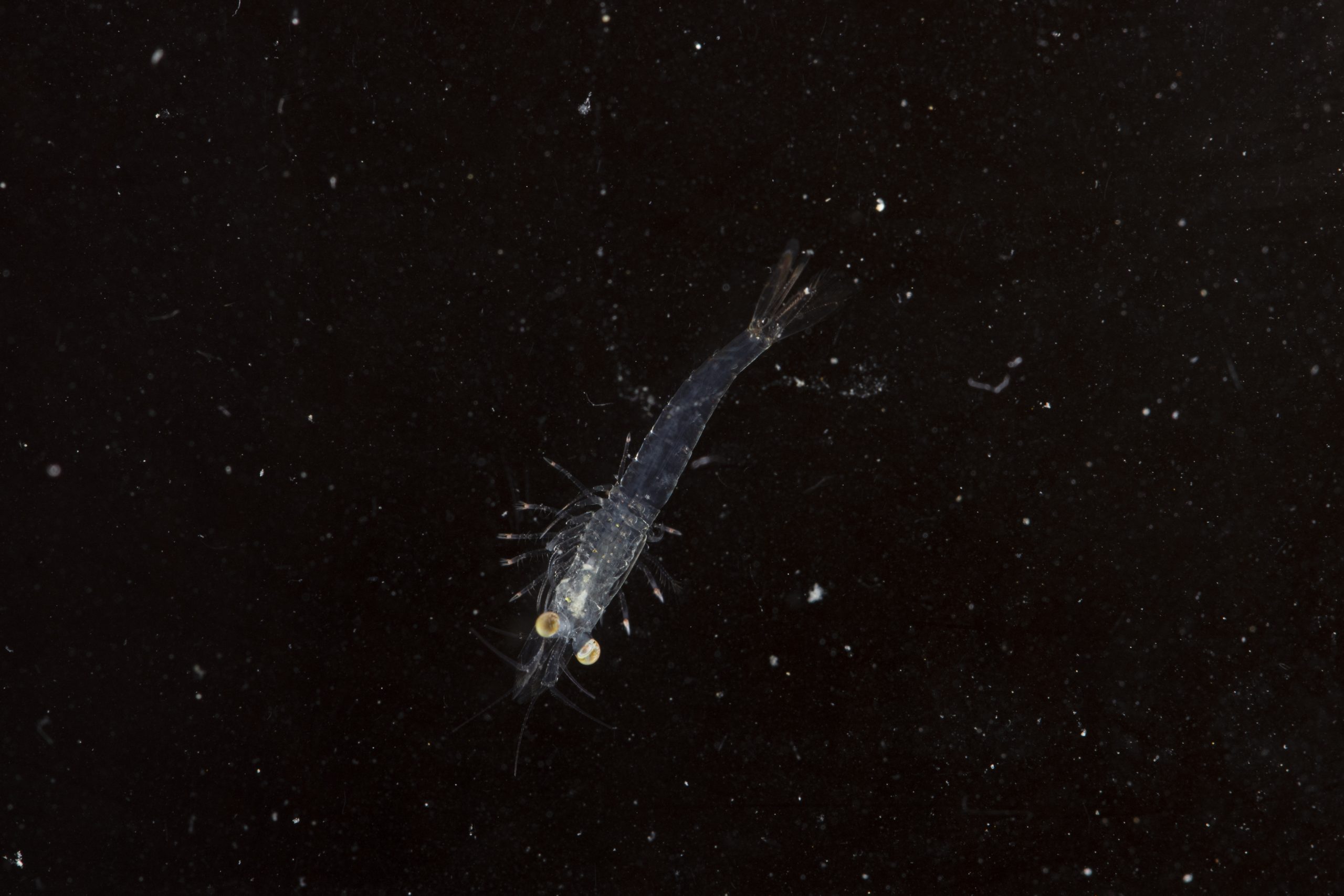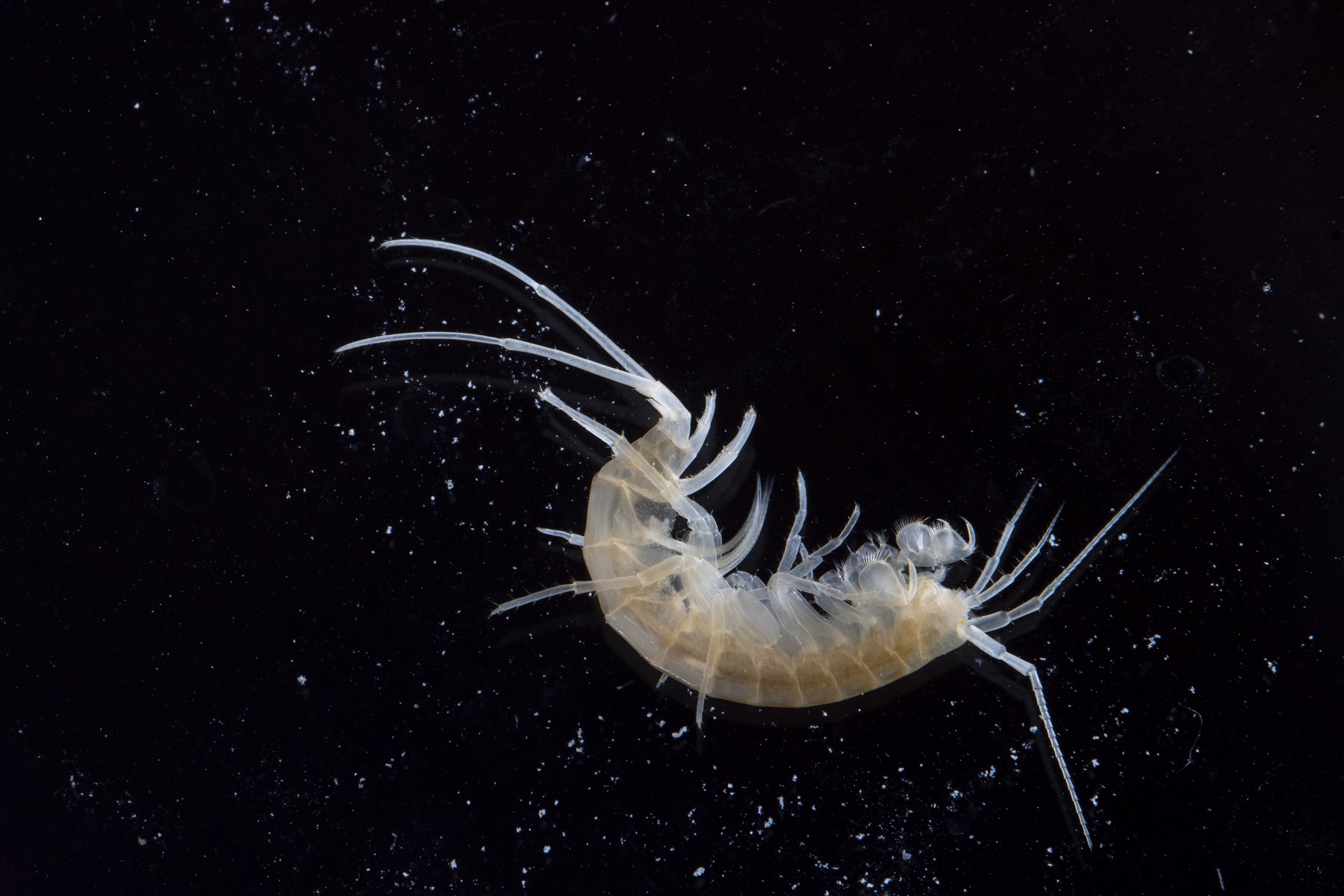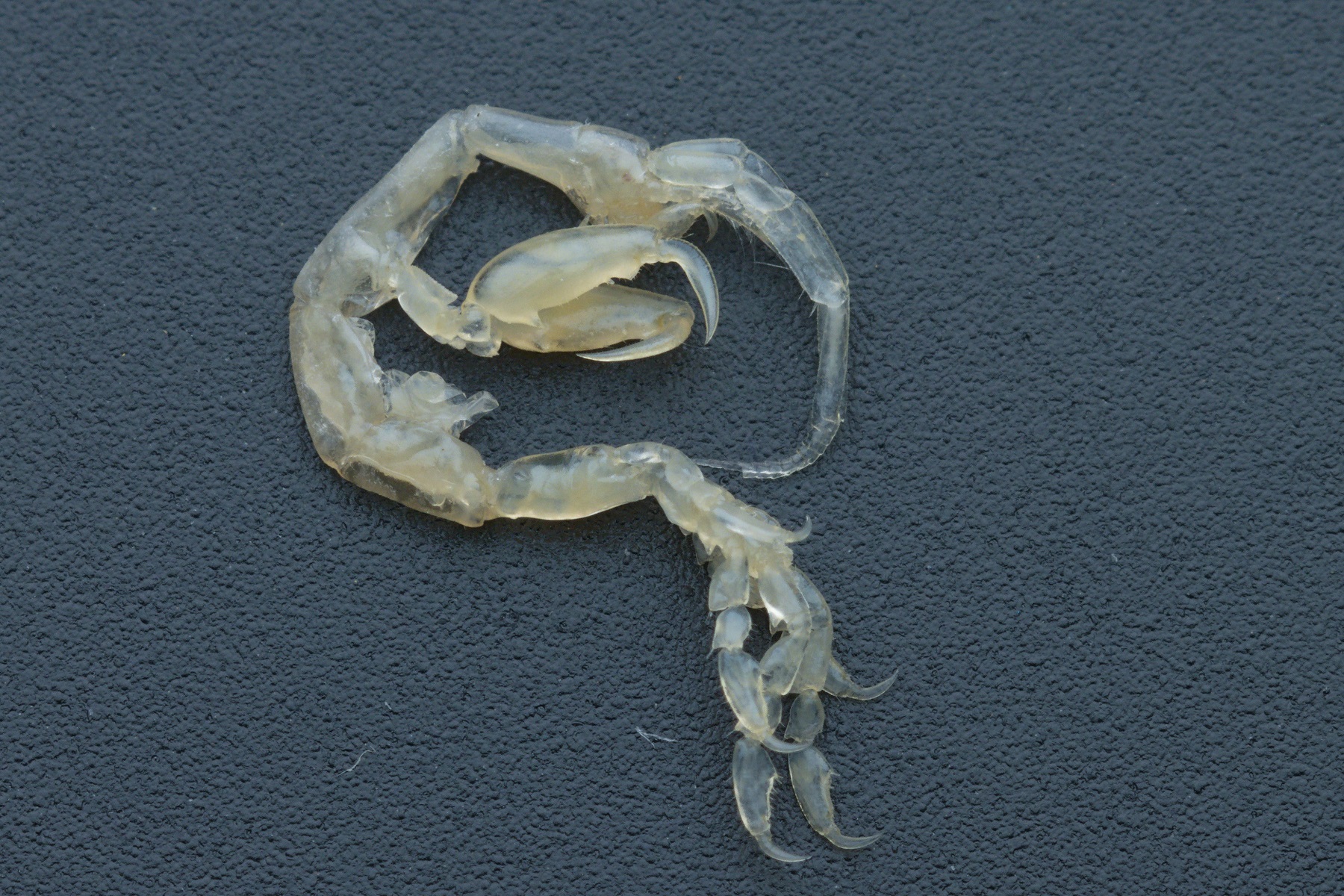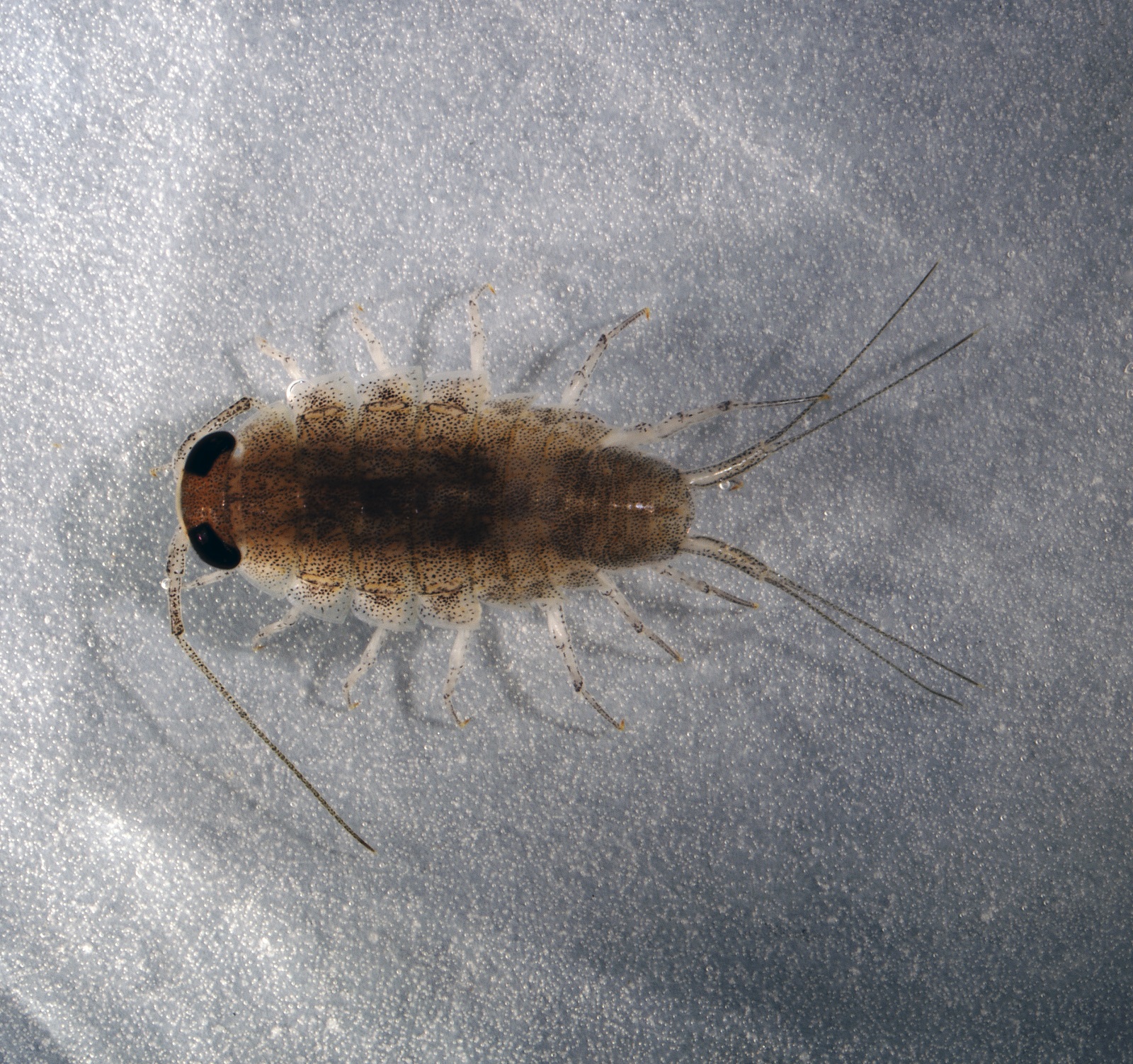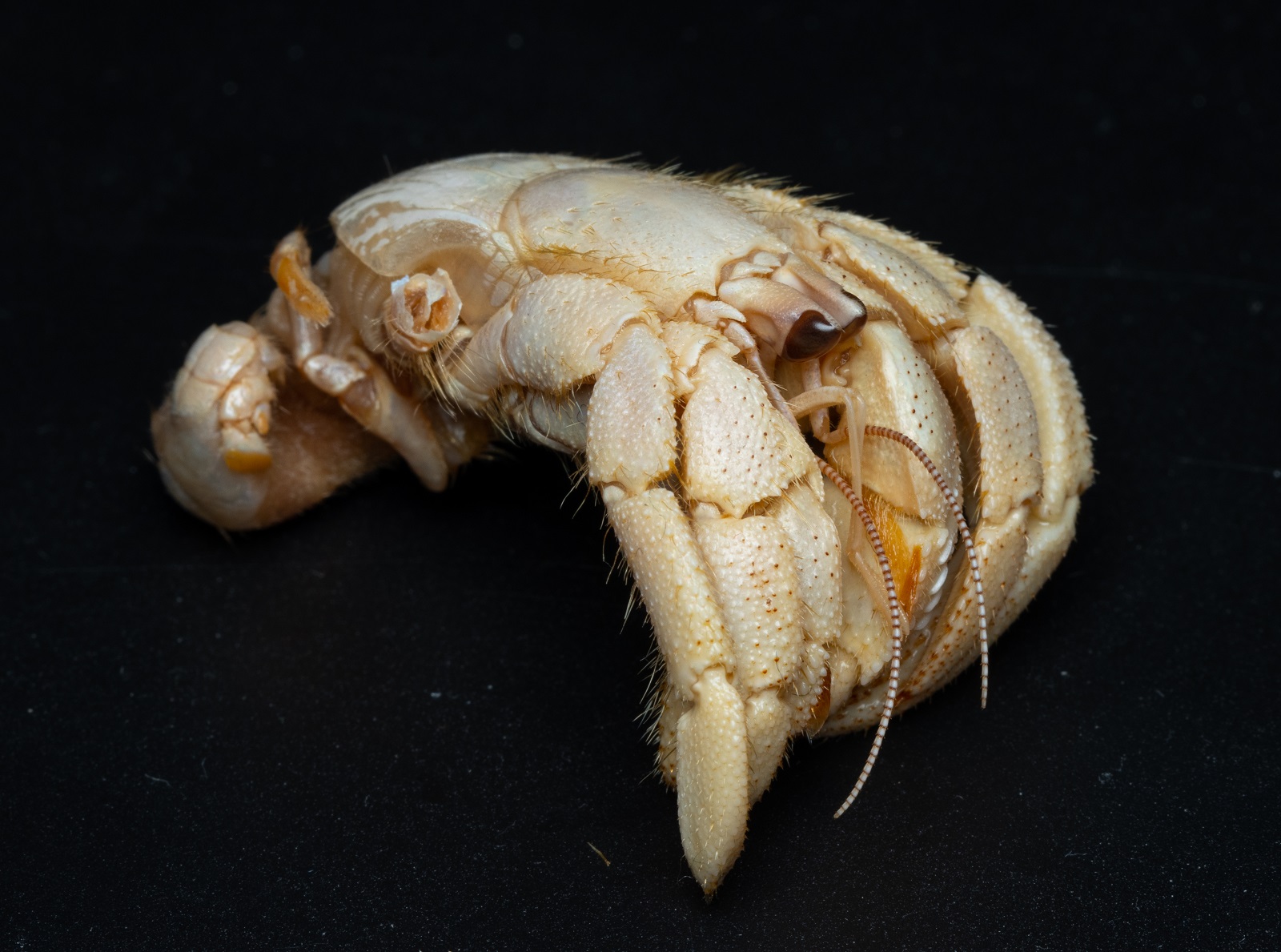- Crustaceans
Asellus aquaticus
The waterlouse is a freshwater isopod belonging to the family Asellidae. It is approximately one centimeter long and has a dorsoventrally compressed body. Coloration varies among individuals. They are generally speckled in different shades of brown with lightly colored appendages. They are sexually dimorphic, with males being considerably larger than females. The body of a waterlouse consists of a cephalothorax, pereon, and pleon (abdomen). The cephalothorax and pleon are relatively short, while the pereon is the most prominent body region.
The cephalothorax includes an acron, five head segments, and an additional segment. All the segments are fused into a uniform unit. The head bears small compound eyes consisting of four ommatidia. Two pairs of antennae are filiform; antennae I are short and used for chemoreception, while antennae II are long and used for mechanoreception. The mouthparts comprise a pair of mandibles, a pair of maxillae I, a pair of maxillae II, and a pair of maxillipeds. Evolutionary, the maxillipeds are modified appendages of the first thoracic segment.
The pereon consists of seven clearly delimited segments (pereomeres), each carrying a pair of appendages (pereopods). The first pair of pereopods is subchelate and used in feeding, cleaning, and agonistic behavior against conspecifics. The rest six pairs of pereopods are cylindrical walking legs, with each pair being longer than the preceding pair. In males the fourth pair of pereopods is short and hooked, used in grasping and holding the female in amplexus. In females, a marsupium is formed at the ventral side of the pereon after the parturial molt. The marsupium is basket-shaped and provides a safe environment for the development of offspring. Its walls are formed by oostegites, which are a leaf-like outgrowths at the coxae of second to fifth pair of pereopods.
The pleon comprises six body segments (pleomeres) and a telson. The first two pleomeres are free, small, and inconspicuous. The rest four pleomeres are fused with the telson into a uniform pleotelson. The segmentation of the pleon is thus obscured and the pleotelson appears as a large oval plate from its dorsal side. The five pairs of pleopods are biramous and leaflike. They act as gills, ventilate the marsupium, and aid in swimming. The first pair of pleopods is completely reduced in females. In males the second pair is modified as gonopods that serve in the transfer of sperm during mating. The sixth pair of appendages on the pleon are uropods, which are rod-like and forked. Presumably, uropods play a role in mechanoreception.
The waterlouse is distributed throughout Europe with the exception of the most northern and western areas. In is present throughout Slovenia and can be encountered in most types of freshwaters. It is the most abundant in slow-flowing or still waters with a lot of decaying organic matter and absent in fast-flowing waters with limited amount of organic material. It is adapted to a wide range of temperatures, it can tolerate organic and inorganic pollution, anoxic conditions, and even brackish water. It avoids direct light and aggregates with conspecifics in large groups under stones and dead plant material. They are opportunistic detritivores, that prefer to feed on biofilms of fungi and bacteria growing on the decaying organic material.
The reproduction of waterlice in Slovenia is most intensive between March and October. The male can fertilize the female only during a brief period just after the female molts the posterior part of her exoskeleton and when the gonopore is not covered by a mineralized cuticle. In order not to miss this opportunity, the male grabs the female with the third pair of pereopods a few days earlier and carries her beneath his body until the parturial molt of female. This formation of the male and female is called amplexus, precopula, or mate-guarding. This behavior is energetically demanding and exposes the male to a greater risk of predation. Thus, males prefer females that are right before the parturial molt. After mating, the male and female separate. The male continues to search for fertile females, and the female molts the anterior part of the exoskeleton, simultaneously the marsupium is formed on the ventral side of its pereon into which fertilized eggs are layed. Larger females carry more eggs in their marsupium than the smaller ones, thus the males prefer larger females. After about a month of development, approximately 1 mm large juveniles, still lacking the seventh pair of pereopods, leave the marsupium.
The waterlouse colonized the subterranean habitats multiple times independently. The first cave population was described in 1925 by a Romanian researcher Emil G. Racoviţă in cave Črna jama near Postojna. Currently, around ten cave populations are known, mostly from Slovenia where they inhabit underground sections of sinking rivers. Phenotypically, cave waterlice differ from surface ones, due to specific conditions encountered underground. Cave waterlice lack pigmentation, have reduced eyes and elongated second antennae. They also behave differently than the surface waterlice. Generally, they move less, spend less time in shelters, show stronger light avoidance, cling vigorously to the substrate, and withstand stronger water currents. The cave and surface populations can hybridize and have fertile offspring. The same applies to different cave populations. In nature such cross mating is rare, but in the laboratory it is often applied to determine the genotypic background of phenotypic changes. The waterlouse is thus one of the best model organisms to investigate basic evolutionary processes, such as adaptation to novel environments and origin of new species (speciation).
More photos
Related arthropods

Authors
- Urban Bogataj,
- Gregor Bračko,
- Teo Delič,
- Cene Fišer,
- Žiga Fišer,
- Rok Kostanjšek,
- Rudi Verovnik,
- Miloš Vittori,
- Valerija Zakšek.
Students Vito Ham, Vesna Jurjevič, Gaj Kušar, and Adrijan Samuel Stell Pičman also participated in the project.
